Part of our new series of guest posts: America’s Next Bicycle Capital. This week’s guest writer is Kari Schlosshauer of Safe Routes to School Pacific Northwest.
After living in Copenhagen, I moved to Portland because it would be the place in the United States with the greatest opportunity to bicycle calmly, safely, and in good company. I had a bit of a shock when I got here: I realized right away that there was so much still to do.
But it is possible.
It is my great hope that we don’t stop trying to improve and innovate, and here are a few of my thoughts on what’s needed next for Portland.
We need to make it easier to choose to bike or walk — which is not the same as making the choice to drive harder, though that’s certainly part of it.
We need to not be afraid to take a few risks, even in the face of opposition, to do something that’s possible and will make things better.
We need to not be afraid of what creating congestion might do — because studies have shown that people DEAL! and find other ways to get around. Often, those ways are by bike or transit.
It is absolutely possible to make safe space for bicyclists and pedestrians to go everywhere. Right now in Portland, I think we’ve talked about capturing the “interested but concerned” set of bicyclists, but haven’t done enough to address those concerns.
Advertisement
I ride past a lot of streets that are SO WIDE and SO EMPTY of cars. Hawthorne off the bridge comes to mind, as does Belmont.
We need to find a way to create “temporary” projects that show us what can be done when it’s something controversial — because people rarely agree to have an entire lane or parking spaces taken away.
But if that’s too hard (it shouldn’t be, but it often is), then we definitely need to look at our neighborhood streets and do things to make them more livable. I fully support having “arterial streets” that are mainly for car throughput and have bicycle facilities as well, but I think neighborhood streets should actively discourage auto throughput.
Our neighborhood greenways, which should be the spaces where we feel most comfortable walking and riding with our families, have turned into neighborhood cut-throughs. I’m terrified of Southeast Clinton anywhere west of 39th, but especially between 12th and 21st where it’s a total speedway. We ought to implement more of those creative and interesting diverters that let bikes and people through, but make cars go back to the arterials — this helps make our neighborhoods places for people.
In the area within two blocks of a school, there should not be parking or loading zones, nor driving allowed above 5mph (if it’s necessary at all). Should there be some reason to need to drive my child to school, I can walk the last few hundred yards.
Downtown, the bike lanes just disappear. My experience is that when this happens (such as the Hawthorne Bridge dumpout), bicyclists take over ALL the lanes (depending on where they will ultimately go), and this is confusing and frustrating to people in cars and on bikes alike. People like predictability, which is one of the great benefits of bike lanes, yet it totally falls apart in downtown Portland. Creating space for bicyclists downtown would go a long way toward clearing up confusion and frustration for both bicyclists and those driving a motorized vehicle.
I also think that, given the large amount of construction that’s been happening in Portland over the past few years, we need to do a much better job of mitigating construction zones. It would not be legal to just close a street (to cars) without extensive detours, etc., yet that’s exactly what typically happens to bikes and people walking. Whenever construction displaces a sidewalk, bike lane, or crosswalk, even for an hour, it should be mitigated so that people can still walk, bike, and cross.
I have two little kids, so their (in)ability to ride on a street is the lens through which I ride these days. If you want to see a better Portland, try looking at our city that way, too.
Kari Schlosshauer is Pacific Northwest Regional Policy Manager for the Safe Routes to School National Partnership.
If you’d like to add your voice to this series, get in touch via email: michael@bikeportland.org.

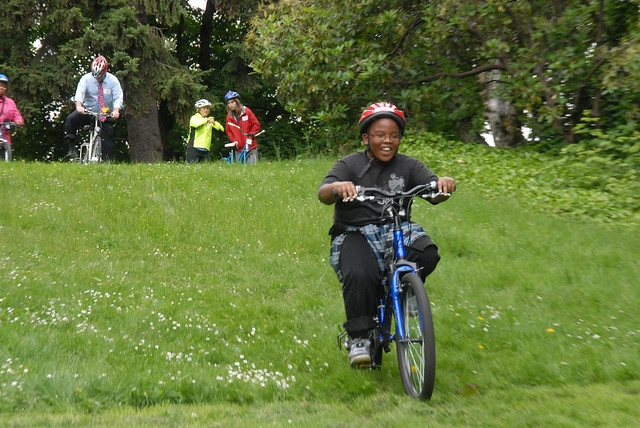
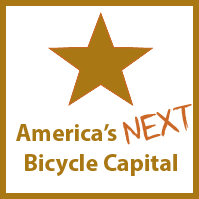
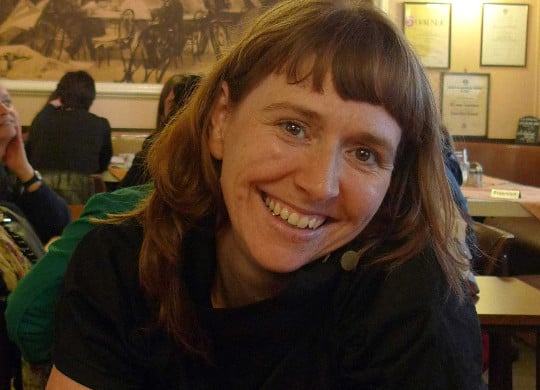
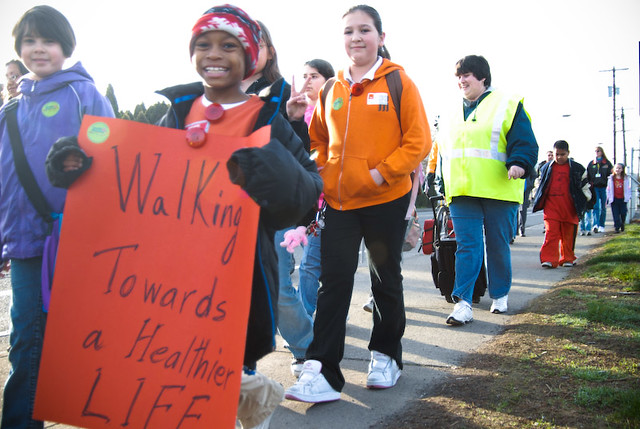
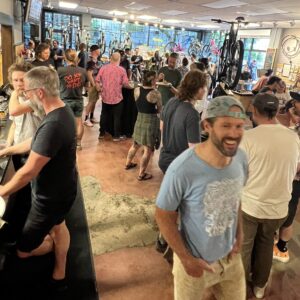


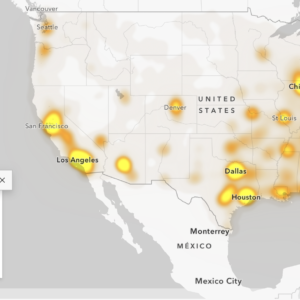
Thanks for reading.
BikePortland has served this community with independent community journalism since 2005. We rely on subscriptions from readers like you to survive. Your financial support is vital in keeping this valuable resource alive and well.
Please subscribe today to strengthen and expand our work.
What struck me first was Mayor Sam’s bike event photo, so naturally I thought, was there no equivalent photo of Charlie? Just a thought on contrasting leadership priorities I guess. Good posting.
Ten buck gas and rationing would go a long way in solving America’s car problem.
the “bike ambassador” is just as far removed from the reality of active transport activism in copenhagen as the most hard-core VCer. mikael colville-andersen does not spend much effort on getting the bull to *like* him.
It is a bit more complex than that…and all of our petrodollars would flow to other places for their transportation infrastructure …and since the gas tax is not indexed to a percentage of the sale then there is less money to invest in options and maintenance as inflation rises to reflect the $10/ gallon thus buying less infrastructure here.
Go Kari!
And yes, CaptainKarma, Mayor Sam was a strong supporter of Safe Routes to School from day one!
Diverters!
“bicyclists take over ALL the lanes (depending on where they will ultimately go), and this is confusing and frustrating to people in cars and on bikes alike. People like predictability, which is one of the great benefits of bike lanes, yet it totally falls apart in downtown Portland.”
i think the hawthorne “dump out” is an embarrassment and it should be improved by taking space from motorists (which will cause even more beneficial frustration among motorists). nevertheless, the fact that so many cyclists are willing to take the lane is a *strength*. making downtown confusing and frustrating for motorists should be a goal of anyone interested in active transport.
and i want to again give pbot kudos for calming downtown to ~12-15 mph via signaling.
I found myself disagreeing with her point here as I ride downtown to work every day. But maybe there’s two ways to look at biking in the core. One, biking IN downtown is actually pretty good. Generally mellow traffic speeds, direct routes, no legal requirement to stay in a bike lane. Left lane, right lane, whatever, just go where you need to. And car drivers expect this most of the time, I find. Anyway, I’ve few complaints except for the dangerous Broadway bike lane. Which brings me to a second point…
Two, biking INTO and THROUGH downtown is not good. Minimal signage and no excellent (safe, direct, fast) routes. The Morrison bridge cycletrack connection on the west end is laughably bad and the Broadway bike lane is dangerous for much of its length. The Oak Street green lane drops you onto streetcar tracks on 10th. And so on.
An outsider’s perspective is always revealing but this was kind of jarring for me. I wouldn’t want to be expected to use a bike facility just to hop on my bike to go get food cart lunch. Unless those facilities were as comprehensive as the existing grid 🙂
Everything else in the article, very good to hear.
I was also a little shocked when I moved here from the Boston area. Now to start I am by no means the perfect cyclist. I stop at red lights and use hand signals. I ocassionally roll through 4 way stops if I am the only one there, but I at least slow way down. I’ve almost been killed by too many motorists talking or diddling their cellphones while driving. I can’t count how many times I’ve almost been hit at rotaries and intersections in SE because people just don’t stop. Then they get pissed when you call them on it. Oh by the way, I’ve had cyclists pull the same crap too. If you see a giant red primer Schwinn Stingray rolling through an intersection and you have a stop sign and don’t stop, I will have no bad feelings about totaling your road bike with my 50 lbs steel beast. Car free since 07.
“Oh by the way, I’ve had cyclists pull the same crap too.”
Jaywalkers too. Active transport is a deadly menace!
Two suggestions in this post stand out for me:
1) We need to not be afraid of what creating congestion might do — because studies have shown that people DEAL! and find other ways to get around. Often, those ways are by bike or transit.
2) In the area within two blocks of a school, there should not be parking or loading zones, nor driving allowed above 5mph (if it’s necessary at all). Should there be some reason to need to drive my child to school, I can walk the last few hundred yards.
People still feel entitled to drive, as if that’s the de facto “best” mode. It’s pretty clearly the worst, from every perspective (cost, health, sustainability, land use, safety) except convenience. IMO driving needs to be actively discouraged and made decreasingly convenient. Not banned, but discouraged. Both of the above suggestions are steps in that direction.
A third is charging parking rates that are high enough to discourage driving. The main reason so many people ride transit and bikes into downtown is because parking downtown is expensive. We should continue to allow more development with ever less parking, and thereby let parking prices rise — faster than inflation — to make it gradually but inexorably less convenient to drive, and relative more convenient to walk, bike, carpool and ride transit.
“I have two little kids, so their (in)ability to ride on a street is the lens through which I ride these days. If you want to see a better Portland, try looking at our city that way, too.”
+1
I suggest propagandizing to teenagers, especially boys, that being motor dependent is less than masculine. Got a 15 year old son? Start calling them “****deleted by moderator****” or “****-deleted by moderator****” when they talk about wanting to get a car on their 16th birthday. Teenage boys swim in a fog of hormones–talk directly to that fog.
“Whenever construction displaces a sidewalk, bike lane, or crosswalk, even for an hour, it should be mitigated so that people can still walk, bike, and cross.”
This. As a pedestrian I’ve found walking on SE Division in the past year or so frustrating with all the closed sidewalks. And since people are still driving lots of cars through there it’s like playing Frogger every time I try to cross the street. And there’s few legal places to cross that make sense because of construction locations and misaligned intersections. Because of this I stay away from Division and I’m sure a lot of other people feel the same way.
In other major cities I’ve seen urban construction happening around the sidewalks, keeping them open most of the time with protection overhead. Why doesn’t Portland mandate this?
This makes so much sense. When a sidewalk is closed and there is car parking on that side of the street, I have never understood why they can’t just put cones up next to the construction and let people walk in the parking spaces. Usually it is just one parking space that would be lost. Is that really too much to ask?
Every word of this article is spot on. Thank you Kari! If you ever find yourself planning a bike/livability event that requires coffee…look us up as we support these things as core to what we do.
Thanks! I need coffee: All. The. Time. 🙂
I should emphasize — if we want to make Portland better for walking and bicycling, we need create safe spaces on our streets for our kids to walk and bike in all neighborhoods.
Connect our schools via traffic-calmed or traffic-free greenways, and we’ve connected our neighborhoods, too. Create those neighborhood-school connections before they’re “demanded” or seen as needed (by traffic models that typically don’t even take kids’ movements into account), and watch the magic of latent demand.
Then give all of our kids pedestrian and bike education in every school in the city, and they will be the healthiest, smartest active transportation citizens we have.
Thanks for the conversation and perspectives!
Whoa! Before we “actively discourage auto throughput” on neighborhood streets, consider that this is exactly what the suburbs did: cul-de-sacs and overloaded arterials. You can move around with less auto traffic in your neighborhood, but try to go anywhere and you’re screwed. Connectivity still rules…don’t fence ’em out. Besides, most neighborhood traffic is exactly that…neighbors.
Ethan-
I agree that we need connectivity, but we should focus our plans (and money) on connectivity for pedestrians and bicyclists first. Connectivity for cars and their drivers has long been over-prioritized.
Personally, I love the fact that drivers are actively diverted from our bicycle boulevards, and that parking is becoming more of a hassle, and more expensive. And that “road diets” and protected bikeways are making driving (and parking a car) marginally less convenient. I see these as positive developments.
Yes, these trends might one day go too far, but IMO we have a long way to go before we reach that point.
SE Clinton has not been upgraded to Neighborhood Greenway Standards, it is still in bike boulevard mode. Push PBOT to spend money upgrading bike boulevards along with creating new greenways. Getting routes like Tillamook and Clinton to greenway levels of auto control is likely to be less expensive that creating new routes, and is also the best route to higher mode shares where users already exist. The NE Going Greenway has about 60% of users on bikes, with peak bike counts approaching the mid 100’s. The SE Ankeny boulevard has 50%-80% bike mode split, with mid 100’s to over 200 bikes per hour during peak times, but could be even better.
Remove all the parking around a school for two blocks? Around Chapman Elementary (NW) many homes don’t even have garages. Many schools also don’t have on-site parking and are buried inside local neighborhoods. It’s not rational to have zero parking as described (Sacramento ES has one big long block frontage).
Discouraging parking around schools sounds great to me because kids wouldn’t have to walk through a cloud of car exhaust every morning and afternoon. There are always those people who have to sit in their cars running their engines. It is strange to me how aware we are of cigarette smoke in public places (thankfully) but we just happily accept high levels of car exhaust wherever we go.
That is a million dollar photo of the boy ring down the bank.